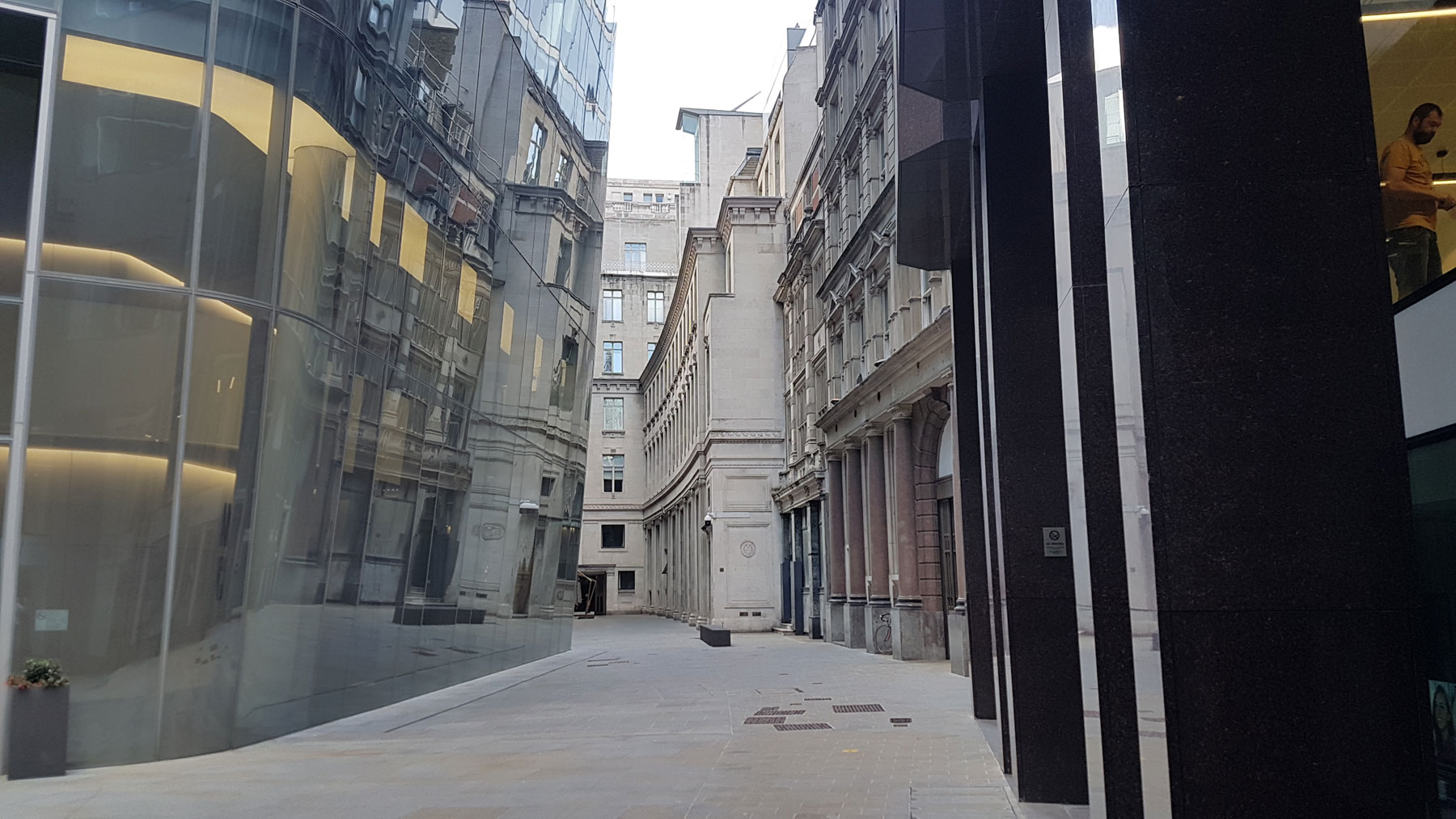This alley just behind the Bank of England starts off with a narrow covered entrance but opens up to a wide passageway.
It has that odd mix of strikingly modern buildings sitting somewhat awkwardly opposite older frontages, which works when on the main road, but feels out of place when on a side alley.
In early medieval times, this part of London was poor for building on, due to waterlogged grounds, and it wasn’t until the land was drained in the 15th century that it started to be developed. The alley alignment as it is today first appears on William Morgan’s map of 1676, as a well-developed alley surrounded by houses leading to a large garden at the northern end.
A century later, the garden has gone, replaced with more housing, and the alley didn’t really change that much until the 1970s, being a small passage lined with modest-sized buildings – now offices instead of houses.
The big change occurred in the 1970s when much of the eastern side was demolished to create the Angel Court Development – two podium buildings and the central tower.
That construction allowed for some limited archaeology, as the earlier Victorian basements had already cleared the site. Archaeologists at MOLA now know that there was a Roman road passing through the area, with some substantial buildings lining it.
The office development was completed in 1975, and the tower was recently refurbished. Novelly, while many office refurbishments try to add floors to the height, this one fattened the building slightly, by building a new facade around the existing core so that the narrow floors could be widened.
The original building also included elements of London’s failed pedway scheme.
As with all new developments, art is required, so here we have Last of Light (3 Needles) by Sara Barker, installed in 2017. The title, ‘3 Needles’ refers to fact that Threadneedle Street was originally called ‘Three Needle Street’.
By the same artist is also Selvedge with dark, which consists of woven and painted metal mesh layers running the whole length of the covered passageway leading to Throgmorton Street.
On the opposite side of the alley is a — at the moment — shabby looking office buildings, built in the late Victorian and early 20th century, although most of the buildings behind the facade were gutted in the 1990s, and are due to be regutted in the 2020s. The remains of the Westminster Bank logo can be seen on the side of the building.
On my visit, two parasols for the local bar were closed and looking not unlike caterpillar cocoons hanging from branches waiting to transform into something beautiful.











Lovely pictures Ian. I thought that the umbrella’s look more like giant bats roosting and waiting for the night to return.
Is that glass office building actually leaning like that? Or is it an optical illusion? Fabulous reflections in the glass. Thank you